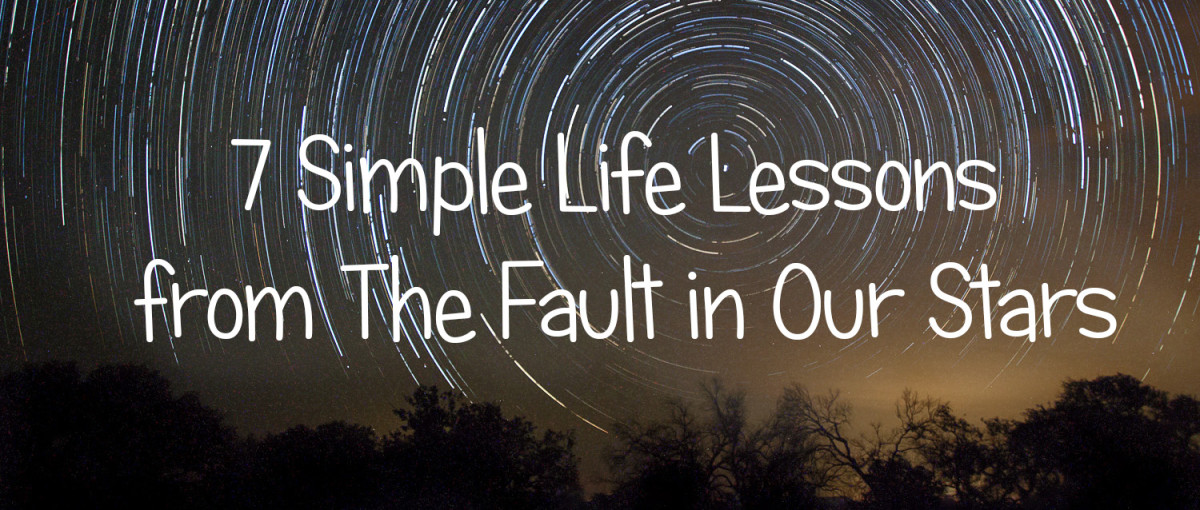- HubPages»
- Books, Literature, and Writing»
- Books & Novels»
- Fiction»
- Romance Novels
Fifty Shades of Grey: Fun Romantic Fantasy or Harmful Abuse Story?

Fifty Shades of Grey is the fastest selling book of all time, and is soon to become a major motion picture. When it was first released, women everywhere were talking about it, some describing how it revolutionized their sex lives. It also stirred up considerable controversy and was banned from the shelves of Brevard County, Florida’s libraries due to its “pornographic” content.
The popularity of this romance novel is somewhat of a mystery. Some credit it to it being a spinoff of the highly popular Twilight series and others attribute it to the fact that people can read this “mommy porn” secretly as ebooks on their kindles, with no one knowing what they are reading.
This is the first romance novel I’ve read since the 1990s, when the “rape hero” was still the norm in mainstream romance. Understanding that popular romance literature had moved away from such violent portrayals of romantic relationships, I was surprised to find that 50 Shades of Grey read exactly the same to me. The writing is insipid, the storyline predictable, and it adheres to a decades-old romance formula: a dependent, self-sacrificing woman (Ana, a virgin), a powerful and somewhat sadistic man (Christian), and an indescribable, unprecedented passion that changes them both.
What is disturbing about the popularity of this novel is not the mild S&M scenes, but how the storyline so closely mimics the patterns displayed in an abusive relationship. Remove the S&M entirely, and the basic dynamics of power and control that exists in abusive relationships remain.
SPOILER ALERT: While it’s hard to call it a “spoiler” since the novel is so predictable, this review does include some information that may be considered “spoiler” material, so if you haven’t read it, proceed with caution.
Fifty Shades and the Cycle of Abuse
Abusive relationships happen when one partner in a relationship tries to keep power and control over the other partner. The basic cycle goes like this: tension builds, the abuse (physical, emotional, sexual, or psychological) takes place, the abuser apologizes and promises to be better, there is a honeymoon phase, and then the cycle repeats itself.
In Fifty Shades of Grey, powerful and controlling Christian wants Ana. Tension builds as he tries to convince her to enter his world of S&M. At some point, he pushes her too far. She runs away sobbing, retreating to her friends or apartment, or flying away to a different city. He tracks her down wherever she is, apologizes, and promises to try harder to give her what she wants. They have torrid sex. He pushes her too far, she runs away, he apologizes.... you get the point.
Additional “rape culture” myths in Fifty Shades
Popular media often portrays relationships in a way that fosters male dominance over women and violence towards women. Here are some of the messages in Fifty Shades that contribute to this culture:
- Powerful men who are obsessive and controlling are sexy. Christian is powerful, obsessive, and controlling to the point of stalking Ana. He tracks her down anywhere she is (using a mythical GPS system that can track her phone, for example), showing up at her doorstep uninvited when he’s scared she might leave him. He repeatedly tells her that he wants complete control over her and is exceedingly jealous of any interaction she has with other men. Yet, despite this repeated obsessive and stalking behavior, Ana finds him irresistible. In reality, men who control and stalk, no matter how physically attractive, should be avoided at all costs.
- Women secretly want to be hurt. Every time Christian hurts her physically, Ana has a near instant O. Her “inner goddess” comes out and relishes the pain. Perhaps if what was being portrayed was a consensual S&M relationship, relishing the pain might work. But Ana is not interested in being hit or chained or clamped. In fact, the entire premise of the book is him trying to convince her to sign a contract to engage in an S&M relationship. She is only considering it in hopes of winning his love. Yet, she’s aroused when he spanks her, suggesting that women secretly want to be hit and hurt, even if they say they don’t. In reality, no one wants to be hurt. Suggesting that they secretly do is a dangerous message for men and women.
- Abusive men can be changed into loving ones, if the woman just sticks with it. Christian is a self-proclaimed damaged man who needs to control and hurt women to be aroused. Ana is not a willing participant in his S&M world, and the entire book focuses on her resistance to entering into this type of relationship. Yet, at the end of the novel (spoiler!), she has clearly won him over, transforming him from being violent and controlling to being weak with love. In reality, it is rare for someone to change in this type of situation, without serious professional help (no matter how stunning the woman they desire is).
It’s just fantasy, why does it matter?
Some will say I’m taking this book too seriously, that I should lighten up, and just enjoy the fun, smutty romance. After all, Ana is an adult (barely), is smart and sassy, and ultimately wins over Christian’s love. But, to accomplish this, she had to endure being spanked, hit, controlled, tied up, isolated from her family and friends, sworn to secrecy, and to obey the whims and desires of a controlling, damaged man.
I know it’s fantasy. I know it’s escape. But, why are people still writing about romance this way? And, why are so many women (and men) gobbling it up? One explanation is that women still don't feel powerful (or equal) in their relationships, and they seek fantasy worlds where women with magical powers are able to change the men in their lives and make them more loving.
The problem is that, for many people, violence in relationships is not fantasy, and it rarely ends happily. One in every four women in the US has experienced severe physical violence at the hands of their partners, about 1 in twelve women is stalked by a current or former partner, most of these stalkings include physical assault, and one-third of all female homicide victims are killed by an intimate partner. These numbers are increasing.
Is it OK to Read Fifty Shades of Grey?
Of course it’s ok to read this novel. It's clearly fulfilling a need, providing an erotic escape from the day-to-day, perhaps helping women explore a sexual side they never knew existed or providing an opening for discussion with their partners.
But, I challenge people to read it with a critical mind. It should make the reader uncomfortable, not because of the soft porn/S&M element, but because of abusive undertones of the relationship between the protagonists. Some argue that Ana is really the powerful one in the book: she wields “magic” over Christian and is successful at transforming him to someone who can express love... sometimes. But, it does so at a cost, distorting female sexuality, romanticizing violence against women, and suggesting that women can help or change violent men if they just love them enough. Possessive, controlling behavior is not a sign of an overwhelming, powerful love; it is a sign of abuse.
More From This Author
- Mommy Wars: Do Moms Who Work Part-Time Have It All?
Discussions of the “mommy wars” often focus on two groups: Working Moms and Stay-at-Home-Moms (SAHMs). But, there is an emerging group of moms who fall in between the two: moms who choose to work outside the home part-time. This article explores the - More Reasons Women Still Can’t Have It All: A Refl...
Anne Marie Slaughter's Atlantic article has struck a chord among many American women. She proposes reasons and solutions to addressing challenges women face today as they try to balance work and family. This article explores some additional reasons w - Titanic 100 Years Later: Social Class and Survival
Titanic represents one of the biggest boat disasters in history. It also teaches an important lesson about the influence of social class on health and survival. This article describes how the physical structure of the ship itself impacted passengers' - Barriers to Breastfeeding: Why US Breastfeeding Rate...
Despite its many known benefits, breastfeeding rates in the US are astoundingly low compared to other countries through the world. This article explores the impact of hospital practices, societal attitudes, and unfavorable maternity leave practices o




